Potrebujeme váš súhlas na využitie jednotlivých dát, aby sa vám okrem iného mohli ukazovať informácie týkajúce sa vašich záujmov. Súhlas udelíte kliknutím na tlačidlo „OK“.
ASTM F2450-10
Standard Guide for Assessing Microstructure of Polymeric Scaffolds for Use in Tissue Engineered Medical Products
Automaticky preložený názov:
Štandardné orientačný bod pre posúdenie mikroštruktúru polymérnych lešenia pre použitie v prípravky tkanivového inžinierstva Medical Products
NORMA vydaná dňa 1.3.2010
Informácie o norme:
Označenie normy: ASTM F2450-10
Poznámka: NEPLATNÁ
Dátum vydania normy: 1.3.2010
Kód tovaru: NS-53902
Počet strán: 10
Približná hmotnosť: 30 g (0.07 libier)
Krajina: Americká technická norma
Kategória: Technické normy ASTM
Kategórie - podobné normy:
Anotácia textu normy ASTM F2450-10 :
Keywords:
microstructure, pore size, pore volume, porosity, porous materials, tissue scaffolds, Polymeric scaffolds, Tissue engineered medical products (TEMPs), ICS Number Code 11.100 (Laboratory medicine)
Doplňujúce informácie
| Significance and Use | ||||||||||||||||
|
The ability to culture functional tissue to repair damaged or diseased tissues within the body offers a viable alternative to xenografts or heterografts. Using the patient’s own cells to produce the new tissue offers significant benefits by limiting rejection by the immune system. Typically, cells harvested from the intended recipient are cultured in vitro using a temporary housing or scaffold. The microstructure of the scaffold, that is, its porosity, the mean size, and size distribution of pores and their interconnectivity is critical for cell migration, growth and proliferation (Appendix X1). Optimizing the design of tissue scaffolds is a complex task, given the range of available materials, different manufacturing routes, and processing conditions. All of these factors can, and will, affect the surface texture, surface chemistry, and microstructure of the resultant scaffolds. Factors that may or may not be significant variables depend on the characteristics of a given cell type at any given time (that is, changes in cell behavior due to the number of passages, mechanical stimulation, and culture conditions). Tissue scaffolds are typically assessed using an overall value for scaffold porosity and a range of pore sizes, though the distribution of sizes is rarely quantified. Published mean pore sizes and distributions are usually obtained from electron microscopy images and quoted in the micrometer range. Tissue scaffolds are generally complex structures that are not easily interpreted in terms of pore shape and size, especially in three dimensions. Therefore, it is difficult to quantifiably assess the batch-to-batch variance in microstructure or to make a systematic investigation of the role that the mean pore size and pore size distribution has on influencing cell behavior based solely on electron micrographs (Tomlins et al, (1)). Fig. 1 gives an indication of potential techniques that can be used to characterize the structure of porous tissue scaffolds and the length scale that they can measure. Clearly a range of techniques must be utilized if the scaffold is to be characterized in detail. The classification and terminology of pore sizes, such as those given in Table 2, has yet to be standardized, with definitions of terms varying widely (as much as three orders of magnitude) between differing applications and industries. Both Table 2 and the supporting detailed discussion included within Appendix X2 describe differences that exist between IUPAC (International Union of Pure and Applied Chemistry) definitions and the common terminology currently utilized within most life science applications, which include both implant and tissue engineering applications. Since the literature contains many other terms for defining pores (Perret et al (3)), it is recommended that the terms used by authors to describe pores be defined in order to avoid potential confusion. Additionally, since any of the definitions in Table 2 can shift, dependending on the pore size determination method (see Table 1 and Fig. 1), an accompanying statement describing the utilized assessment technique is essential. All the techniques listed in Table 1 have limitations for assessing complex porous structures. Fig. 2a and Fig. 2b show a through- and a blind-end pore respectively. Porometry measurements (see 7.4) are only sensitive to the narrowest point along a variable diameter through-pore and therefore can give a lower measure of the pore diameter than other investigative techniques, such as scanning electron microscope (SEM), which may sample at a different point along the pore. The physical basis of porometry depends on the passage of gas through the material. Therefore, the technique is not sensitive to blind-end or closed pores. Therefore, estimates of porosity based on porometry data will be different from those obtained from, for example, porosimetry (see 7.3), which is sensitive to both through- and blind-pores or density determinations that can also account for through-, blind-end, and closed pores. The significance of these differences will depend on factors such as the percentage of the different pore types and their dimensions. Further research will enable improved guidance to be developed. Polymer scaffolds range from mechanically rigid structures to soft hydrogels. The methods currently used to manufacture these structures include, but are not limited to: Casting a polymer, dissolved in an organic solvent, over a water-soluble particulate porogen, followed by leaching. Melt mixing of immiscible polymers followed by leaching of the water-soluble component. Dissolution of supercritical carbon dioxide under pressure into an effectively molten polymer, a phenomenon attributed to the dramatic reduction in the glass transition temperature which occurs, followed by a reduction in pressure that leads to the formation of gas bubbles and solidification. Controlled deposition of molten polymer to produce a well-defined three-dimensional lattice. The manufacture of three-dimensional fibrous weaves, knits, or non-woven structures. Chemical or ionic cross-linking of a polymeric matrix. |
||||||||||||||||
| 1. Scope | ||||||||||||||||
|
1.1 This guide covers an overview of test methods that may be used to obtain information relating to the dimensions of pores, the pore size distribution, the degree of porosity, interconnectivity, and measures of permeability for porous materials used as polymeric scaffolds in the development and manufacture of tissue-engineered medical products (TEMPs). This information is key to optimizing the structure for a particular application, developing robust manufacturing routes, and providing reliable quality control data. 1.2 The values stated in SI units are to be regarded as standard. No other units of measurement are included in this standard. 1.3 This guide does not purport to address all of the safety concerns, if any, associated with its use. It is the responsibility of the user of this standard to establish appropriate safety and health practices and to determine the applicability of regulatory limitations prior to use. |
||||||||||||||||
| 2. Referenced Documents | ||||||||||||||||
|
Podobné normy:
Historická
1.11.2009
Historická
1.11.2013
Historická
1.11.2009
Historická
1.3.2013
Historická
1.3.2013
Historická
1.3.2011


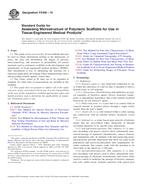
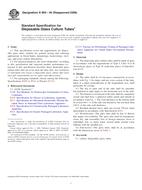 ASTM E890-94(2009)..
ASTM E890-94(2009)..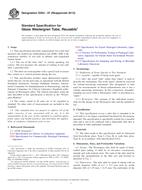 ASTM E923-97(2013)..
ASTM E923-97(2013)..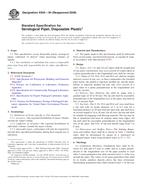 ASTM E934-94(2009)..
ASTM E934-94(2009)..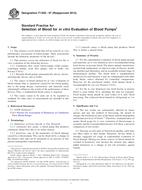 ASTM F1830-97(2013)..
ASTM F1830-97(2013)..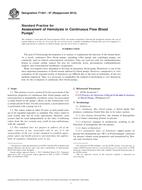 ASTM F1841-97(2013)..
ASTM F1841-97(2013)..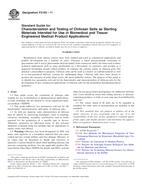 ASTM F2103-11
ASTM F2103-11
 Cookies
Cookies
